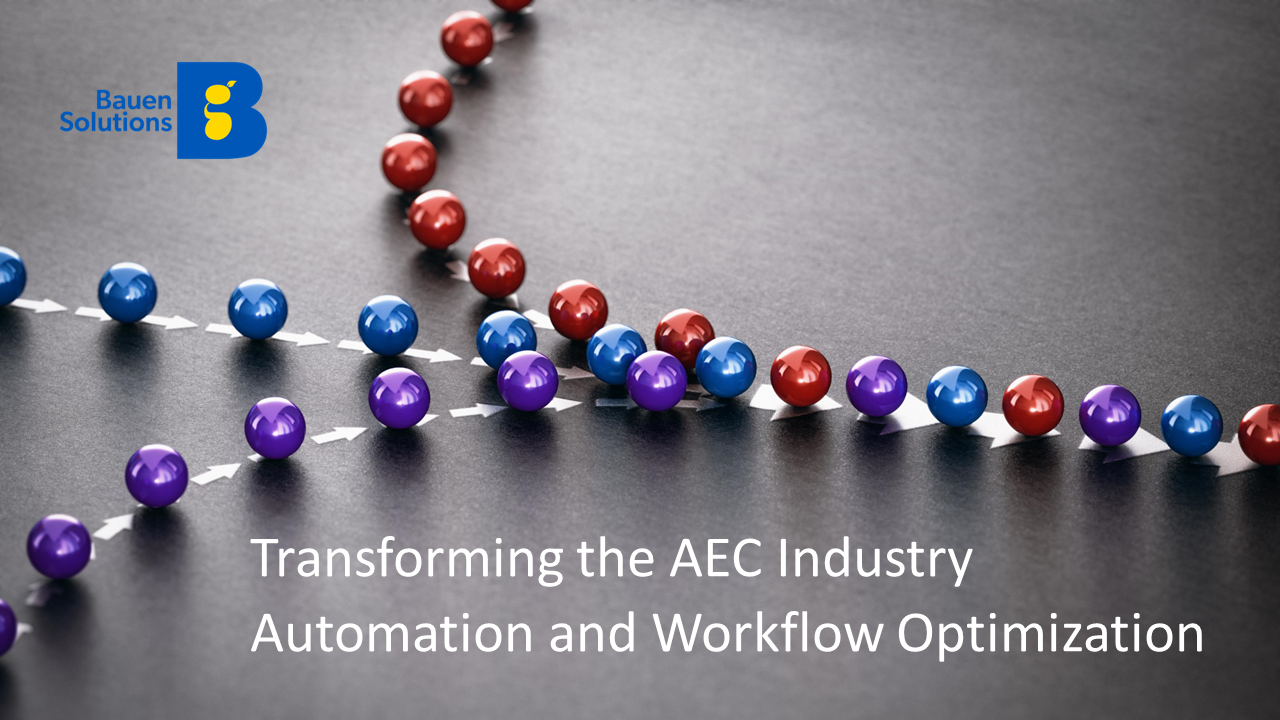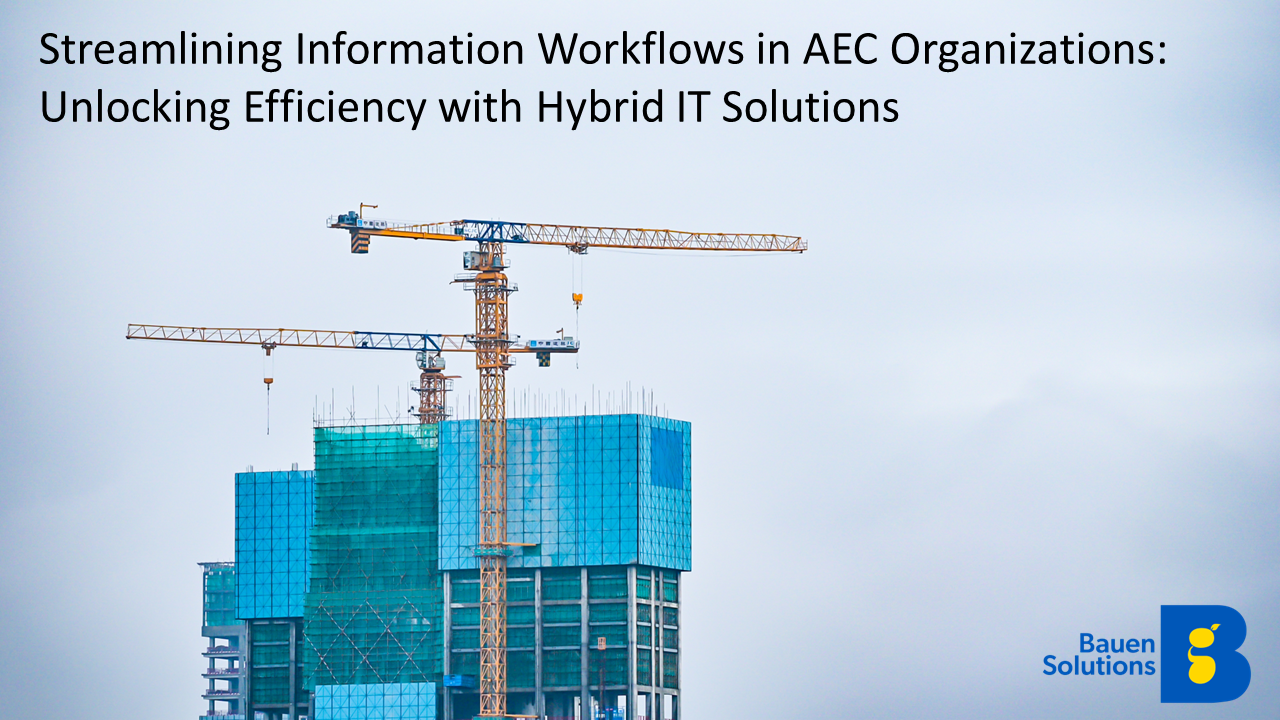The Architecture, Engineering, and Construction (AEC) industry has historically faced numerous challenges, including cost overruns, schedule delays, and inefficient resource allocation. However, with the rise of digital technologies and the increasing availability of data, the AEC industry is harnessing the power of data-driven decisions to address these challenges effectively. This article explores how data-driven approaches are revolutionizing the AEC industry, improving decision-making processes, enhancing project outcomes, and driving overall efficiency.
Enhanced Project Planning and Design:
Data-driven decisions are transforming project planning and design processes within the AEC industry. By leveraging historical project data, industry benchmarks, and predictive analytics, stakeholders can make informed decisions about project feasibility, cost estimation, and resource allocation. Advanced data analytics enables professionals to simulate and optimize various design scenarios, identifying potential issues and improving project outcomes. This data-driven approach ensures that decisions are based on accurate insights, reducing the risk of costly redesigns and delays.
The Role of Bauen Solutions’ Custom Applications
Bauen Solutions recognizes the importance of effective communication in construction projects and has developed custom applications tailored to address this challenge. These applications serve as powerful tools for facilitating seamless and timely information exchange among project teams, ensuring that everyone is on the same page.
Improved Risk Management:
The AEC industry involves inherent risks that can significantly impact project success. Data-driven decision-making helps identify and mitigate risks effectively. By analyzing historical data, industry trends, and real-time project data, stakeholders can identify potential risks, such as material shortages, weather conditions, or labor constraints. This information allows project teams to proactively plan for contingencies, allocate resources efficiently, and implement risk mitigation strategies. By embracing data-driven risk management, the AEC industry can minimize costly disruptions and improve project resilience.

Optimized Resource Allocation:
Efficient resource allocation is crucial for project success and profitability. Data-driven decisions enable the AEC industry to optimize resource allocation by analyzing various factors, such as labor productivity, equipment utilization, and material availability. By leveraging historical data and predictive analytics, stakeholders can identify areas of resource inefficiency and make data-backed decisions to streamline operations. This approach improves project timelines, reduces costs, and maximizes resource utilization, leading to improved profitability and client satisfaction.
Enhanced Collaboration and Communication:
Data-driven decisions facilitate better collaboration and communication among project stakeholders. With the help of digital platforms, stakeholders can access and share real-time project data, fostering transparency and alignment. This enables seamless coordination between architects, engineers, contractors, and clients, reducing the likelihood of misunderstandings and conflicts. By leveraging data-driven insights, stakeholders can engage in productive discussions, make informed decisions collectively, and ensure the project progresses smoothly.

Sustainable and Energy-Efficient Solutions:
The AEC industry is increasingly focused on sustainability and energy efficiency. Data-driven decisions play a pivotal role in achieving these goals. By leveraging building performance data and energy modeling, stakeholders can analyze the environmental impact of design choices and make informed decisions to optimize energy efficiency. Additionally, data-driven approaches enable the evaluation of sustainable materials, construction techniques, and renewable energy solutions. This integration of data-driven sustainability strategies enhances the industry’s ability to create environmentally conscious buildings and infrastructure.
The AEC industry is embracing data-driven decision-making to address challenges effectively. By leveraging the power of data analytics, project stakeholders can enhance project planning and design, improve risk management, optimize resource allocation, foster collaboration, and drive sustainable outcomes. Embracing data-driven decisions not only reduces costs and delays but also enhances project quality, sustainability, and client satisfaction. As the AEC industry continues to evolve, data-driven approaches will play an increasingly crucial role in shaping a more efficient, resilient, and sustainable built environment.
Bauen Solutions has emerged as a leading player in empowering the AEC industry with data-driven decision-making and business intelligence. Through their innovative technologies and comprehensive solutions, Bauen Solutions has revolutionized how stakeholders in the industry tackle challenges. By leveraging advanced analytics, machine learning algorithms, and cloud-based platforms, Bauen Solutions enables organizations to access and analyze vast amounts of data in real-time. This empowers them to make informed decisions throughout the project lifecycle, from planning and design to construction and operation.
Bauen Solutions’ expertise in data integration, visualization, and predictive modeling has helped AEC professionals optimize resource allocation, mitigate risks, improve project outcomes, and drive overall efficiency. With Bauen Solutions’ cutting-edge tools and services, the AEC industry can navigate complex challenges with confidence and achieve unprecedented levels of success.
With Bauen Solutions as a driving force, the AEC industry is experiencing significant improvements in project management, communication, safety, resource management, document handling, and data analysis.
My name is Walter Silin, and I’m the President of Bauen Solutions. Our team of experts have decades of experience and specializes in helping Architecture Engineering and Construction firms like yours identify areas where material management can be improved, including:
- Inventory management
- Material handling and transportation
- Quality control
- Cost management
- Sustainability
We can help AEC organizations automate material management processes, improve inventory tracking, monitor quality control, and optimize material usage to improve efficiency, reduce costs, and improve your sustainability performance.
If you want to learn more about how we could benefit your organization, please schedule a call with me to discuss this further.






